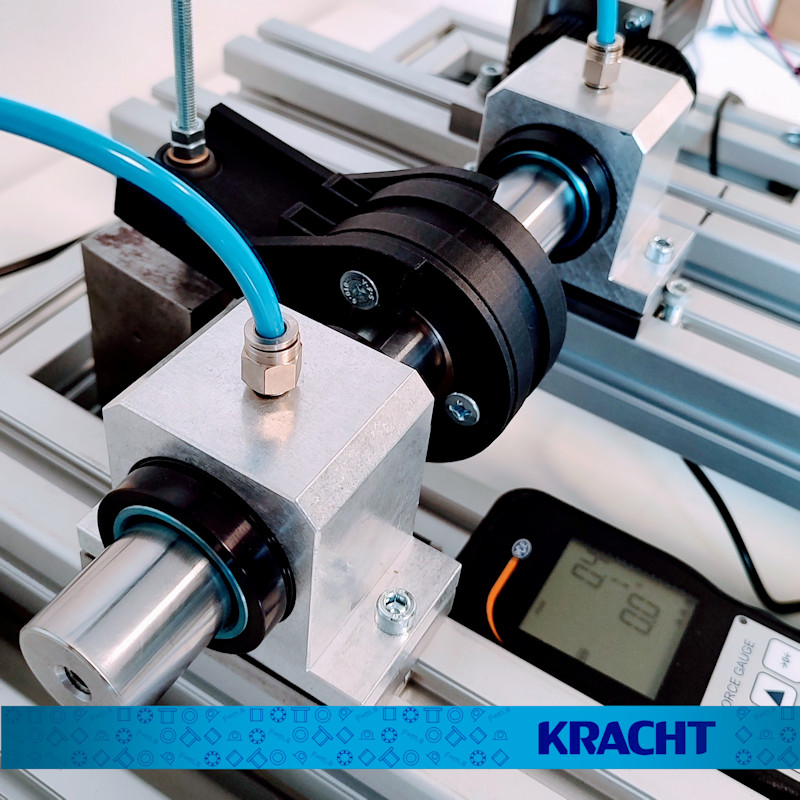Starting in September 2024, Thomas Vrakking completed an internship at IB Kracht B.V. During his time with us, he explored a fascinating phenomenon in the field of tribology: stick-slip. This effect occurs when two surfaces in relative motion alternately stick and then suddenly slip. Such behavior can significantly impact the performance, efficiency, and lifespan of machines that use plain bearings.
To better understand and analyze stick-slip, Thomas developed a custom tribotester. This device uses a brushless DC motor (BLDC) and a force sensor to accurately measure even the smallest variations in friction. By integrating Blue Ring air bearings, external influences are minimized, resulting in highly precise measurement data.
But why is stick-slip such an important topic? Firstly, it directly affects machine reliability. Irregular movements and vibrations caused by stick-slip can accelerate wear and lead to malfunctions. Secondly, energy consumption is a factor: overcoming static friction requires more energy than smooth motion. Reducing stick-slip therefore contributes to greater energy efficiency.
With the data collected, we can actively search for solutions—such as identifying suitable materials, surface treatments, and the optimal lubricant to reduce or eliminate stick-slip.
Thank you, Thomas, for your dedication, insightful analysis, patience, and the impressive results!
To better understand and analyze stick-slip, Thomas developed a custom tribotester. This device uses a brushless DC motor (BLDC) and a force sensor to accurately measure even the smallest variations in friction. By integrating Blue Ring air bearings, external influences are minimized, resulting in highly precise measurement data.
But why is stick-slip such an important topic? Firstly, it directly affects machine reliability. Irregular movements and vibrations caused by stick-slip can accelerate wear and lead to malfunctions. Secondly, energy consumption is a factor: overcoming static friction requires more energy than smooth motion. Reducing stick-slip therefore contributes to greater energy efficiency.
With the data collected, we can actively search for solutions—such as identifying suitable materials, surface treatments, and the optimal lubricant to reduce or eliminate stick-slip.
Thank you, Thomas, for your dedication, insightful analysis, patience, and the impressive results!

Date: 30-01-'25
« Back to overview



